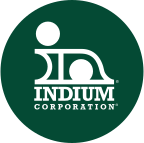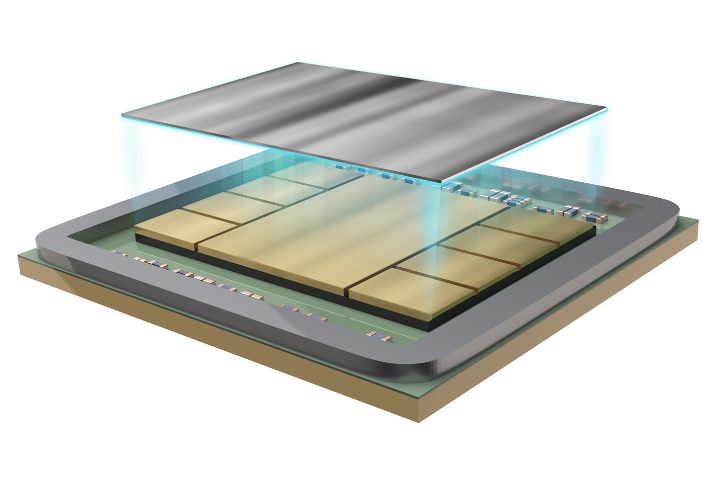There are multiple types of thermal interface materials available, but due to its high thermal conductivity, compressibility, and ease of application, indium metal is one of the most desired thermal interface materials. There are several ways to apply the indium interface but if ultra low resistance is required, soldering an indium preform between two surfaces is one popular method. Pure indium is a great material for a solder-thermal interface due to its ability to self-passivate. While some metals will form very thick metal surface oxides when exposed to ambient conditions, indium forms only a thin film of oxide on its metal surface. The 80-100Å of oxide that it forms is the maximum thickness that will develop on the surface over 2-4 hours before this oxide begins to act as a protective barrier, protecting the surface from further oxidation. The presence of surface oxides makes it impossible for solder to wet onto a substrate. For wetting to occur, reducing gases, ultrasonics, chemical fluxes or other novel methods for oxide removal must be used. The oxide layer that indium forms is so thin that it does not obstruct solder wetting onto precious metal surfaces. Also, this oxide layer can be removed very quickly if desired by dipping the indium metal into a mild acid.
Indium Oxide Layer
Indium Corporation Blogging Team
Indium Corporation Blogging Team
Our blogging team includes engineers, researchers, product specialists, and industry leaders. We share expertise in solder materials, electronics assembly, thermal management, and advanced manufacturing. Our blog offers insights, technical knowledge, and solutions to inspire professionals, showcasing product innovations, trends, and best practices to help readers excel in a competitive industry.



